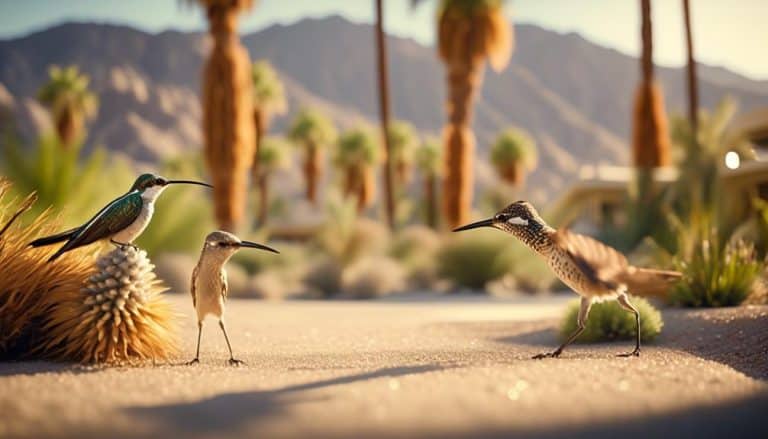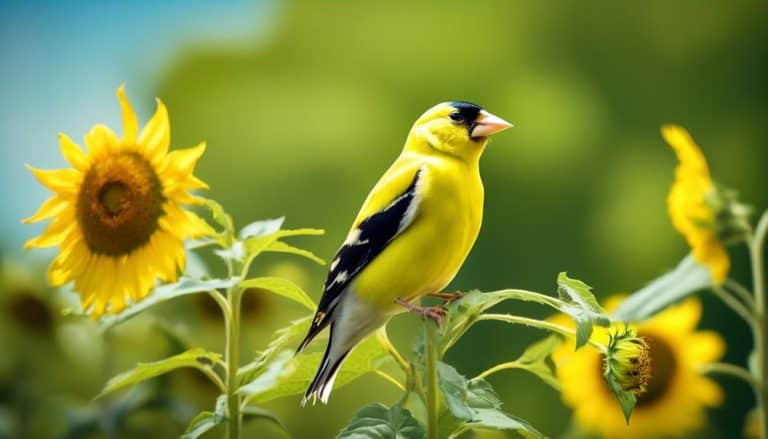As I set out to explore the world of birds in Michigan, I couldn't help but feel like a modern-day explorer, venturing into an undiscovered realm of feathered wonders.
From the majestic Bald Eagle soaring high above the treetops to the vibrant Red-winged Blackbird perched on a swaying reed, Michigan is teeming with a diverse array of avian species.
But what makes these birds so common in the Great Lakes State? Join me on this journey as we uncover the secrets behind the presence of these winged inhabitants, and perhaps, gain a deeper understanding of our natural surroundings.
Bald Eagle
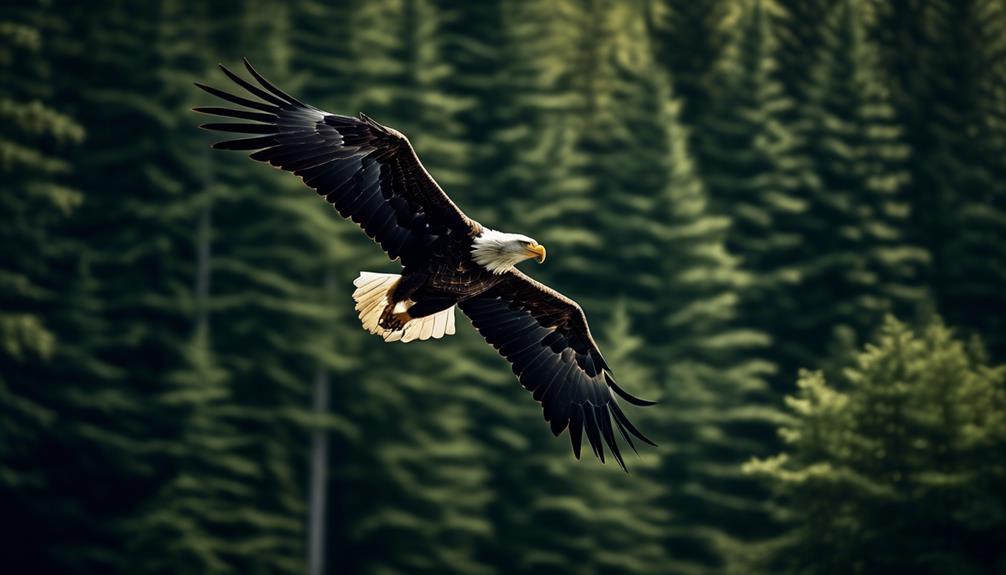
The Bald Eagle, a majestic bird of prey, is commonly found in the state of Michigan. As an apex predator, the Bald Eagle plays a crucial role in the ecosystem. Conservation efforts have been implemented to protect this iconic species and ensure its survival.
Bald Eagles in Michigan primarily nest near large bodies of water such as lakes, rivers, and reservoirs. They construct their nests, known as eyries, on tall trees, cliffs, and sometimes even man-made structures. These nesting sites provide a safe haven for the eagles to raise their young. Bald eagles are known to reuse their nests year after year, adding more materials to reinforce their structures.
Conservation efforts for Bald Eagles in Michigan have been successful in recent years. The banning of harmful pesticides like DDT, which caused thinning of their eggshells and reproductive issues, has played a significant role in their recovery. Additionally, the establishment of protected areas and habitat restoration projects have provided suitable nesting sites and abundant food sources for these magnificent birds.
American Robin
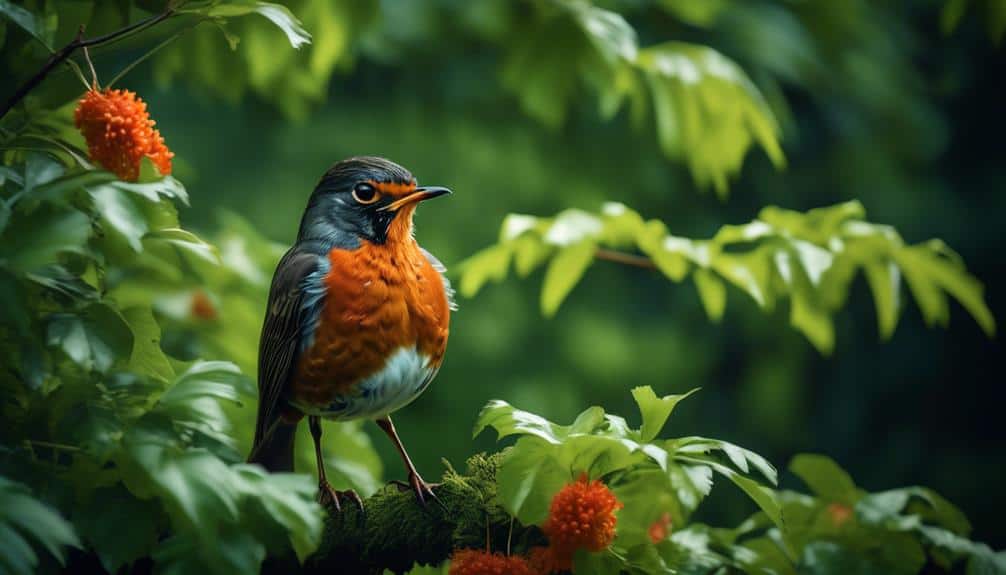
Nesting primarily in trees and shrubs, the American Robin is a common sight in Michigan during the spring and summer months. This bird is known for its distinctive orange breast, grayish-brown back, and white eye-ring.
Here are three interesting facts about the American Robin:
- Breeding habits: American Robins are monogamous and form pairs during the breeding season. They build cup-shaped nests made of grass, mud, and twigs, usually in the crotch of a tree or on a sturdy branch. The female lays a clutch of 3-5 pale blue eggs and both parents take turns incubating them for about two weeks. Once the eggs hatch, the parents work together to feed and care for the chicks.
- Migration patterns: While American Robins are a common sight in Michigan during the warmer months, they actually spend their winters in large flocks in the southern United States and Mexico. In early spring, they embark on long-distance migrations to their breeding grounds in Michigan and other northern regions. These migrations can cover thousands of miles and are driven by the availability of food.
- Diet: American Robins have a varied diet consisting of fruits, earthworms, insects, and spiders. They're known for their ability to detect and pull earthworms out of the ground, using their sharp eyesight and well-developed hearing. During the breeding season, they rely heavily on insects to feed their growing chicks.
Sandhill Crane
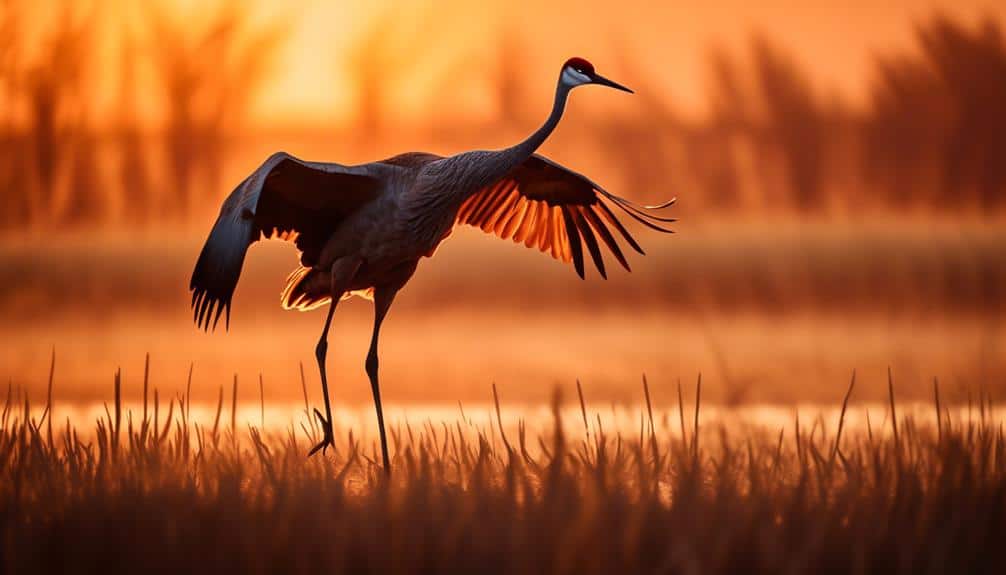
Sandhill Cranes, a species of large, long-legged birds, can be found in various habitats throughout Michigan. These majestic birds are known for their distinctive calls and graceful movements. Despite their widespread presence in the state, Sandhill Cranes face challenges that have led to their endangered status in certain regions.
Migration patterns play a crucial role in the lives of Sandhill Cranes. They're known to undertake long-distance journeys during their annual migrations. In Michigan, Sandhill Cranes can be seen migrating between their breeding grounds in the northern part of the state and their wintering grounds in the southern regions. These migrations are driven by the availability of suitable habitat and food sources.
The endangered status of Sandhill Cranes is primarily due to habitat loss and human disturbance. Wetland destruction, urban development, and agricultural expansion have significantly impacted their breeding and wintering grounds. Additionally, disturbances caused by human activities, such as noise and habitat fragmentation, disrupt their nesting and foraging behaviors.
Efforts are underway in Michigan to protect and restore the habitats that Sandhill Cranes depend on. Conservation organizations, government agencies, and local communities are working together to preserve wetlands and implement measures to minimize human disturbance. By safeguarding their habitats and ensuring their safe migration, we can hope to secure the future of these magnificent birds in Michigan.
Eastern Bluebird
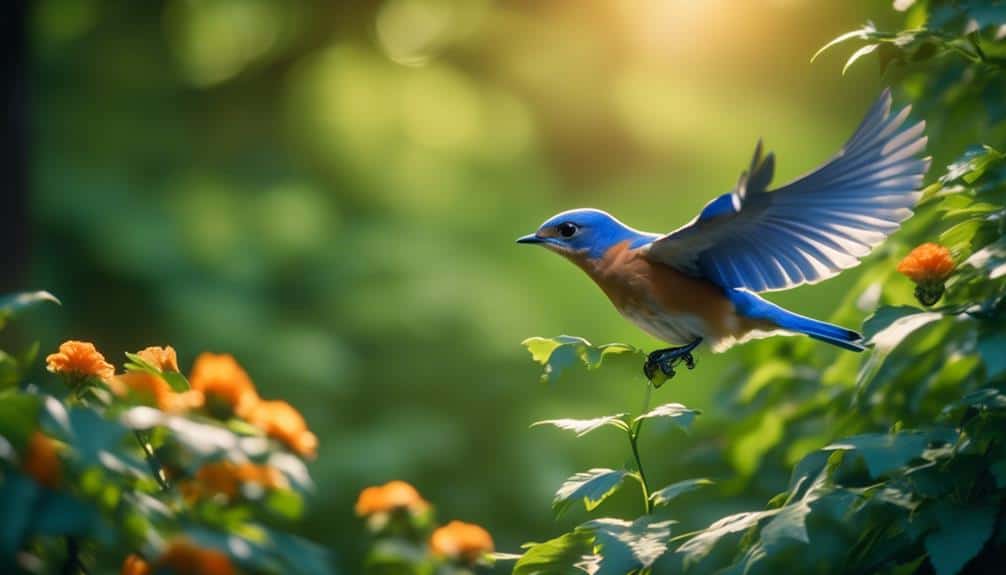
Having discussed the challenges faced by Sandhill Cranes in Michigan, let's now turn our attention to the Eastern Bluebird, a captivating species that thrives in this diverse state.
Eastern Bluebirds can be found in a variety of habitats throughout Michigan. They prefer open areas with scattered trees, such as fields, meadows, and golf courses. These birds also inhabit orchards and suburban areas with suitable nesting sites. The availability of perching sites, such as fence posts and utility wires, is crucial for their hunting behavior. Eastern Bluebirds are known for their ability to hover above the ground and dive down to catch insects and other small prey. They're skilled hunters, using their sharp eyesight to locate their prey from a distance.
- Eastern Bluebirds bring joy to birdwatchers with their vibrant blue plumage and rusty-red breast, creating a striking contrast against a green backdrop.
- Their melodious songs can be heard echoing through the trees, filling the air with a sweet and cheerful melody.
- Witnessing the Eastern Bluebirds' courtship displays, with the male showing off his wings and singing to attract a mate, is a heartwarming experience.
Red-winged Blackbird
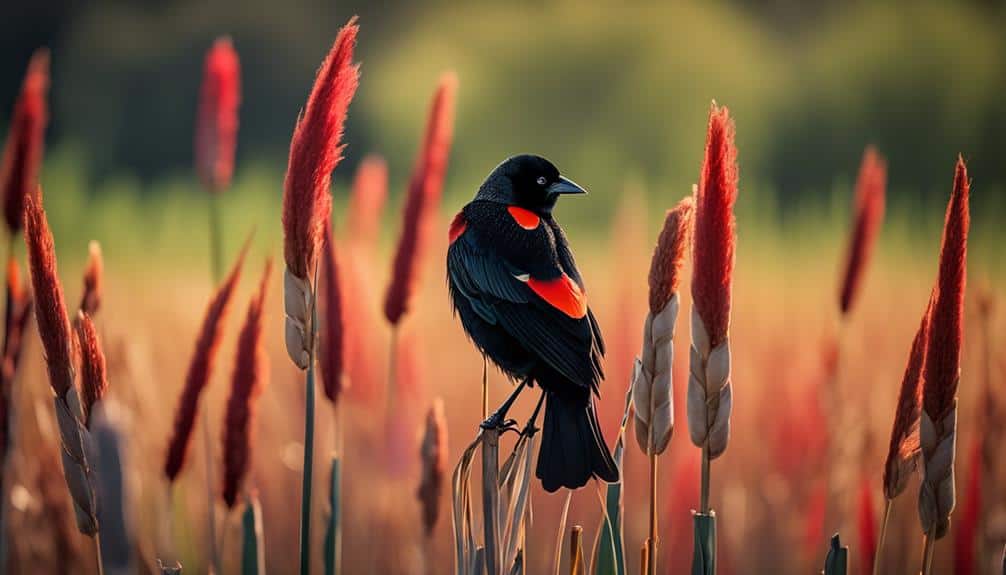
The Red-winged Blackbird (Agelaius phoeniceus) is a common sight in the wetlands and marshes of Michigan. With its striking black plumage and vibrant red and yellow shoulder patches, the male Red-winged Blackbird is easily recognizable. These patches serve as a visual signal to other males, indicating territorial boundaries and attracting females during the breeding season.
In terms of habitat preferences, Red-winged Blackbirds typically inhabit marshes, wet meadows, and the edges of ponds and lakes. They're highly adaptable and can also be found in agricultural fields and grasslands. During the breeding season, males establish territories and defend them vigorously against intruders. They're known for their distinctive song, a series of high-pitched notes that can be heard as they perch on cattails or other tall vegetation.
Red-winged Blackbirds are migratory birds, with populations in Michigan typically breeding during the spring and summer months before migrating south in the fall. They form large flocks and undertake long-distance flights to their wintering grounds in the southern United States and Mexico. In the winter, they often gather in agricultural fields and wetlands, where they feed on seeds, insects, and small invertebrates.
Frequently Asked Questions
How Long Does a Bald Eagle Live?
Bald eagles live up to 20-30 years in the wild, but can reach 40 years or more in captivity. Conservation efforts have helped increase the bald eagle population, ensuring their longevity for future generations.
Do American Robins Migrate During the Winter Months?
Yes, American robins do migrate during the winter months. They typically travel in flocks to warmer regions where food is more abundant. Winter weather can impact their migration patterns, causing them to alter their routes or even stay in their current location if conditions are favorable.
What Is the Habitat Preference of Sandhill Cranes?
What do sandhill cranes prefer when it comes to their habitat? Well, sandhill cranes are known for their diverse foraging behavior and impressive migration patterns. They can be found in wetlands, grasslands, and agricultural fields.
How Many Eggs Does an Eastern Bluebird Typically Lay in a Nest?
Eastern bluebirds typically lay 3-7 eggs in a nest. Their nesting habits involve finding a suitable cavity, building a cup-shaped nest, and incubating the eggs for around 12-14 days.
Do Red-Winged Blackbirds Exhibit Any Specific Behaviors During Mating Season?
During mating season, red-winged blackbirds engage in territorial behavior and perform acrobatic aerial displays. These behaviors serve to establish and defend their breeding territories, attracting mates and displaying their fitness and dominance.
Conclusion
After observing and researching the common birds of Michigan, it's evident that the state is home to a diverse array of avian species.
From the majestic Bald Eagle soaring high in the sky to the melodious American Robin singing its sweet tunes, these birds contribute to the ecological balance of Michigan's natural habitats.
As the saying goes, 'Birds of a feather flock together,' and it's truly remarkable to witness the harmonious coexistence of these magnificent creatures in our great state.


